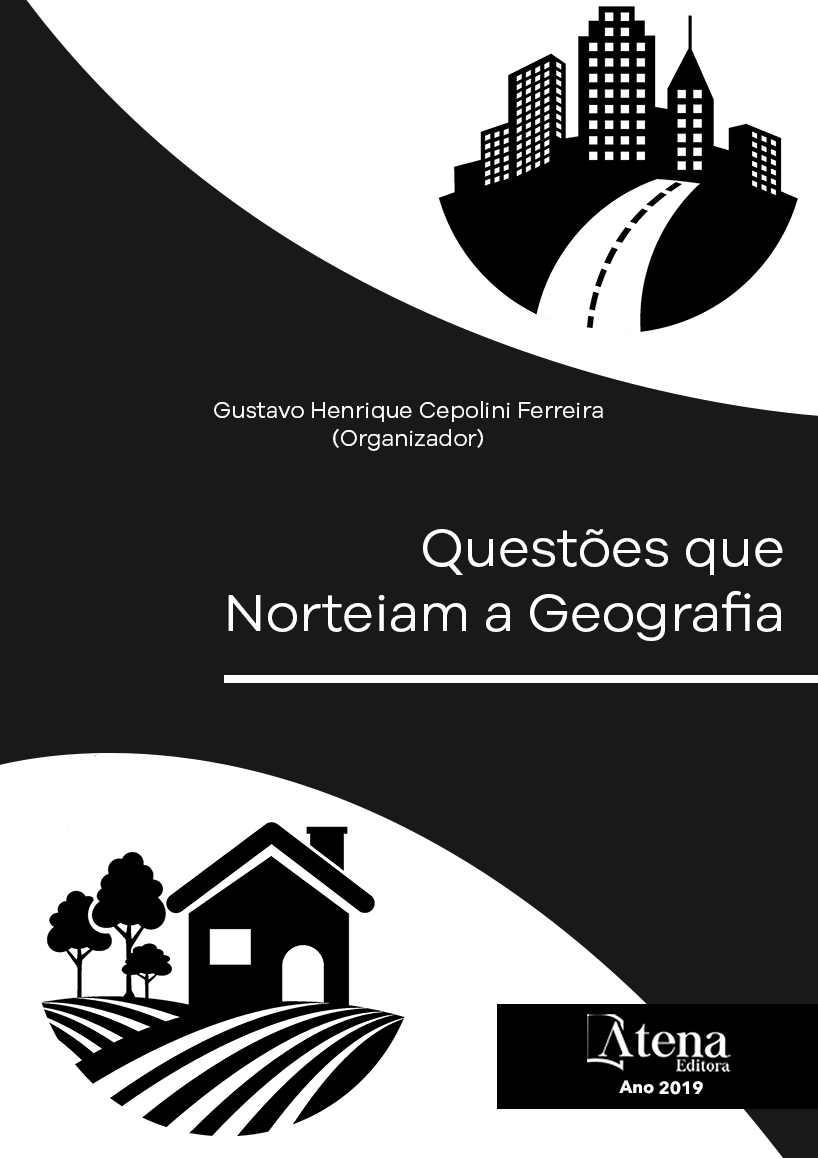
AGRICULTURA IRRIGADA E RECURSOS HÍDRICOS: ESPACIALIZAÇÃO DE PIVÔ CENTRAL NO MUNICÍPIO DE PARAÚNA, GOIÁS, BRASIL
A produtividade de diversas culturas
depende, em grande parte, de fatores climáticos.
Em Goiás, assim como em todo o país, o
regime de chuvas praticamente determina a
disponibilidade de água no solo. A adoção de
sistemas de irrigação, como o pivô central,
tem possibilitado um aumento considerável de
produtividade e de extensão do período apto
para o plantio de culturas agrícolas. Este trabalho
objetivou identificar a expansão de pivô central
e da área irrigada no município de Paraúna,
Goiás, com a utilização de imagens de satélites
para identificação e mapeamento por meio de
interpretação visual. Os resultados indicaram
nos anos de 2000, 2010 e 2017 que houve
incremento da área irrigada, respectivamente
com 3.802 ha irrigados por 48 pivôs, 6.461 ha
irrigados por 94 pivôs e 8.862 ha irrigados por
142 pivôs. De 2010 a 2017 teve um incremento
de área irrigada de 73% e de equipamentos de
pivô de 66%. Apesar do benefício potencial da
irrigação para a produção agrícola, estratégias
para promover o aumento da produção agrícola
baseadas no aumento de áreas irrigadas
devem considerar restrições relacionadas com
disponibilidade, qualidade e conflitos de uso da
água das bacias hidrográficas em que estão
inseridas. Ações estimulando a melhoria da
qualidade da água, conservação de nascentes
e áreas de preservação permanente, bem como
o uso eficiente do recurso, contribuirão para a
melhoria da qualidade e quantidade de água
disponível.
AGRICULTURA IRRIGADA E RECURSOS HÍDRICOS: ESPACIALIZAÇÃO DE PIVÔ CENTRAL NO MUNICÍPIO DE PARAÚNA, GOIÁS, BRASIL
-
DOI: 10.22533/at.ed.5391927096
-
Palavras-chave: recursos naturais, uso da água, irrigação, pivô central, análise espacial.
-
Keywords: natural resources, water use, irrigation, central pivot, spatial analysis.
-
Abstract:
The productivity of several crops
depends to a large extent on climatic factors. In
Goiás, just like in the whole country, the rainfall
regime practically determines the availability
of water in the soil. The adoption of irrigation
systems, such as the central pivot, has enabled
a considerable increase in productivity and
extension of the period suitable for planting
agricultural crops. This work aimed to identify the central pivotal expansion and the
irrigated area in the city of Paraúna, Goiás, with the use of satellite images for identification
and mapping through visual interpretation. The results indicated that in the years 2000,
2010 and 2017 there was an increase in the irrigated area, with 3.802 ha irrigated by
48 pivots, 6.461 ha irrigated by 94 pivots and 8.862 ha irrigated by 142 pivots. From
2010 to 2017 there was an increase of irrigated area of 73% and of pivot equipment of
66%. Despite the potential benefit of irrigation for agricultural production, strategies to
promote increased agricultural production based on increased irrigated areas should
consider constraints related to availability, quality and conflicts of water use in the
catchment basins in which they are inserted. Actions encouraging the improvement of
water quality, conservation of springs and areas of permanent preservation, as well as
the efficient use of the resource, will contribute to the improvement of the quality and
quantity of water available.
-
Número de páginas: 15
- Cleonice Batista Regis Soares
- Frederico Augusto Guimarães Guilherme
- Íria Oliveira Franco de Abreu


